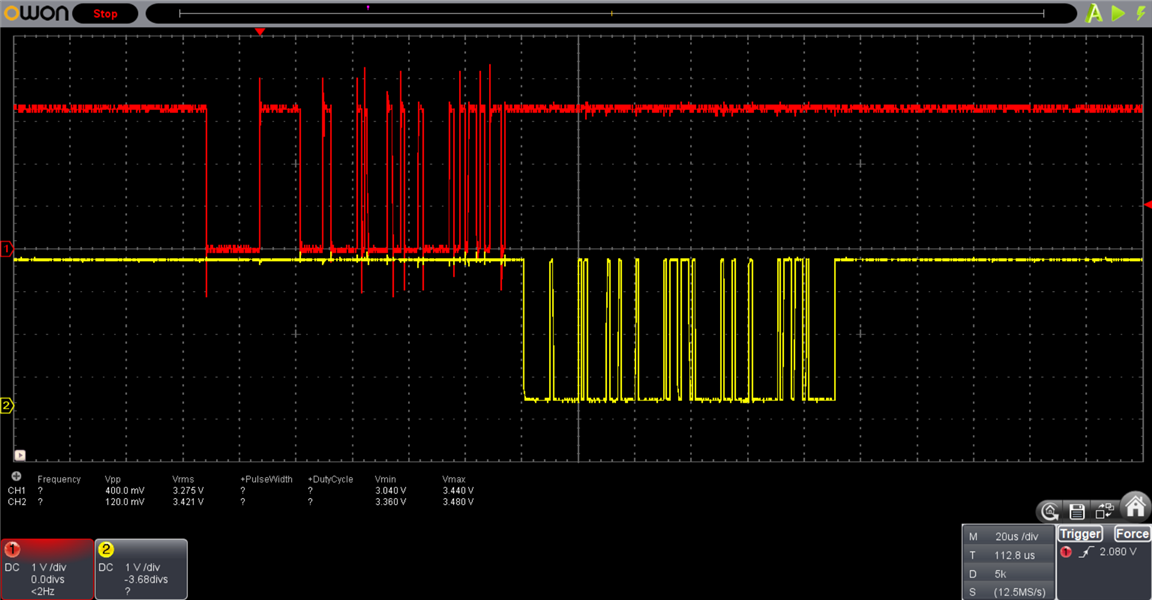Hello, I am working with the BQ79606, I design a software that communicates with the bridge to read or write a register.
Actually, I can read the received message, but I don't understand why the string received by UART from the bridge repeats the last four bytes.
As I understand it, in the reception of data by UART each byte that is transmitted has a start bit that is always zero and a stop bit that is always one.
I am trying to read a device from the Stack with the command "SingleDeviceRead". The address of the stack device is 0x01.
And the record I am trying to read is the ECC_TEST record.
In the response I get I get:
| RESP_INIT | DEV_ADD | STRT_REG_ADD | STRT_REG_ADD | DATA | CRC | CRC | STRT_REG_ADD | DATA | CRC | CRC |
Here is an image of what I receive, which exemplifies it
| 0x00 | 0x00 | 0x01| 0x1D| 0x00| 0x7C| 0x90| 0x1D| 0x00| 0x7C| 0x90|





